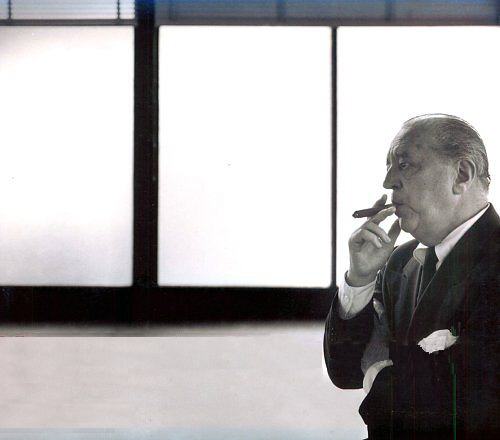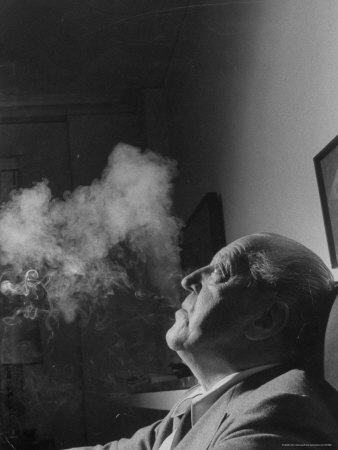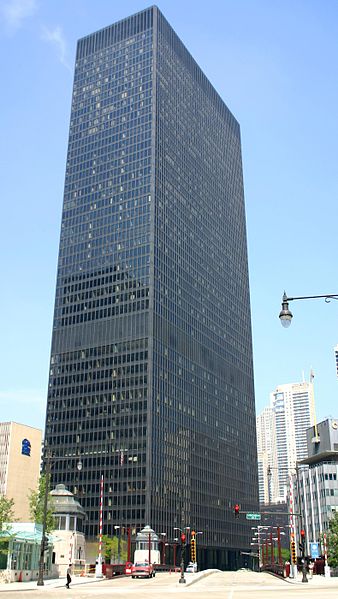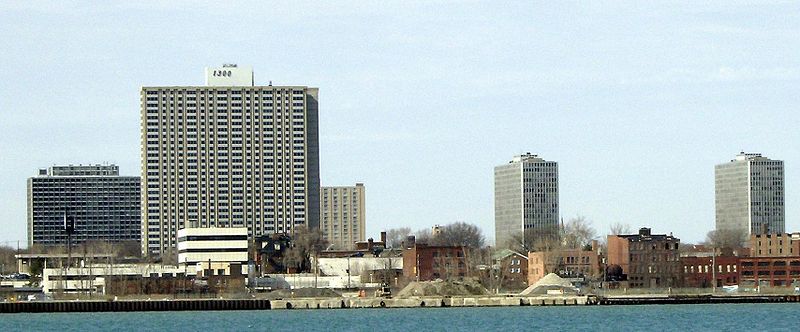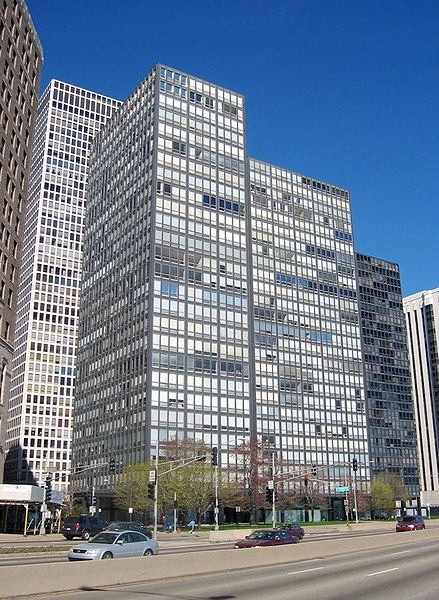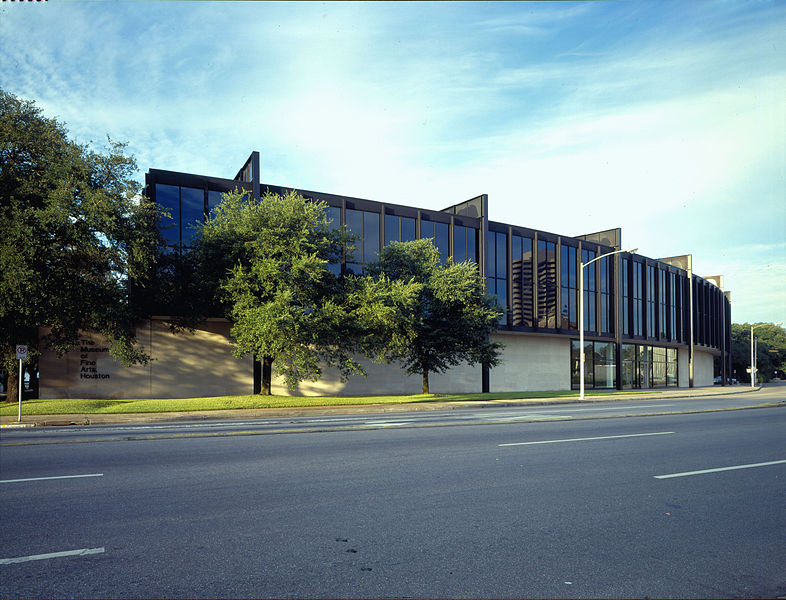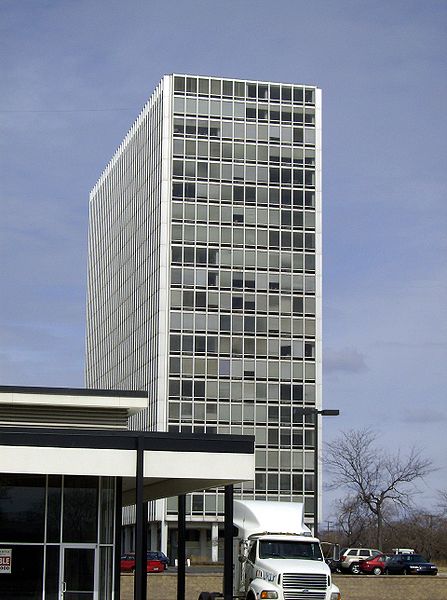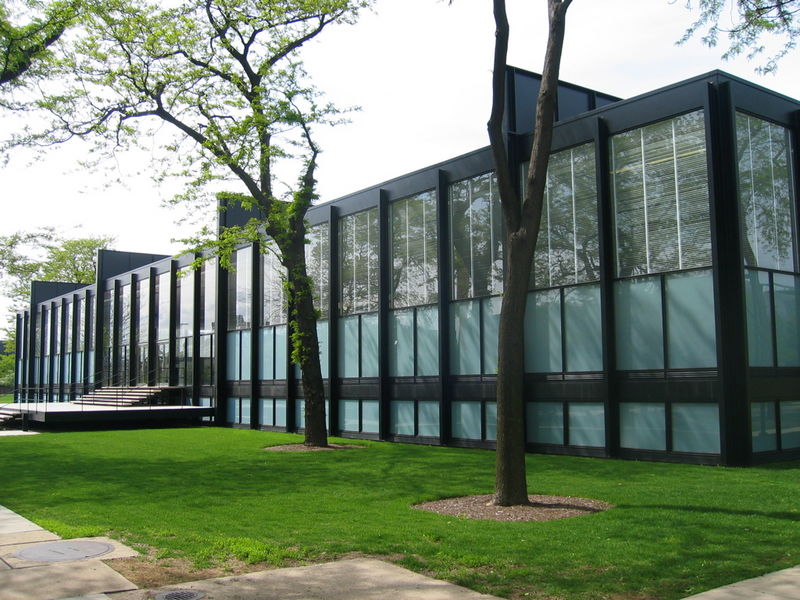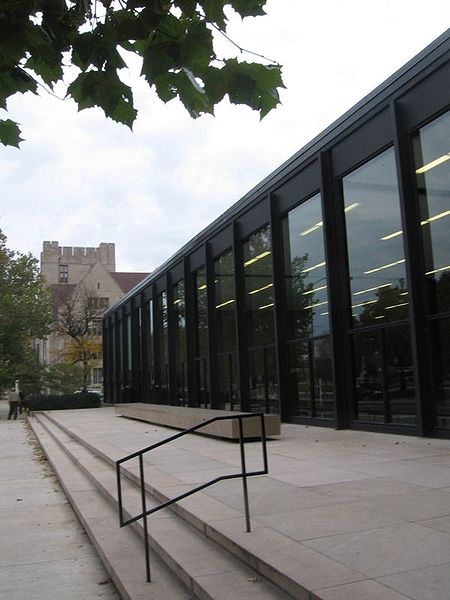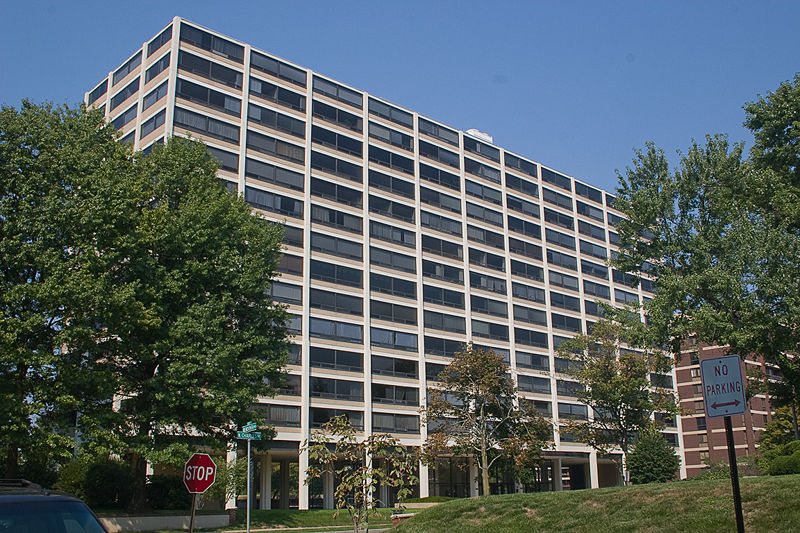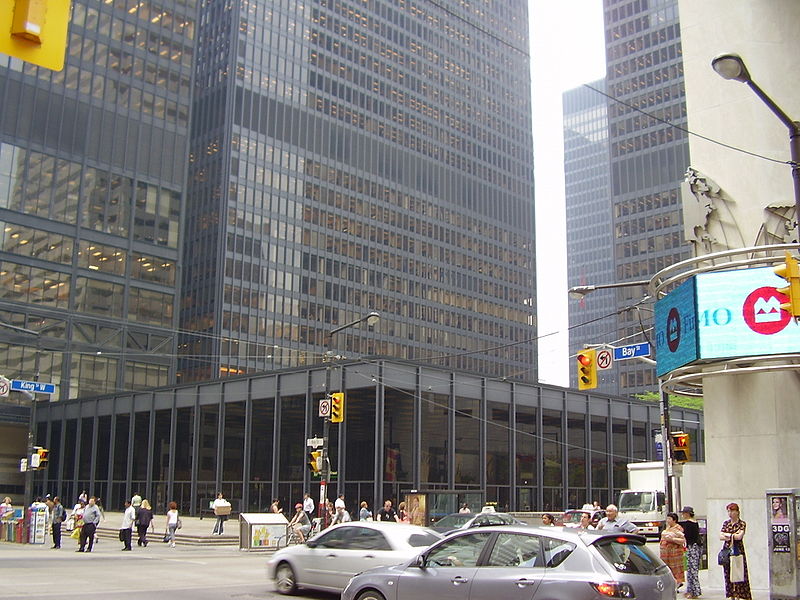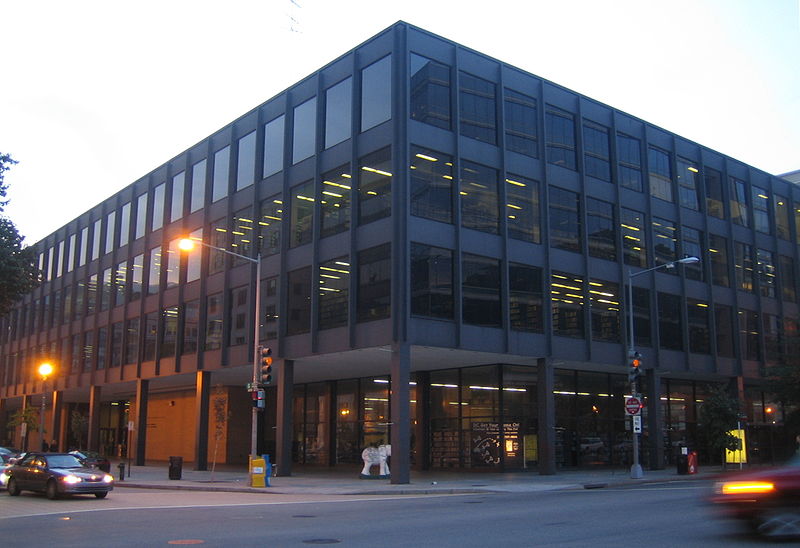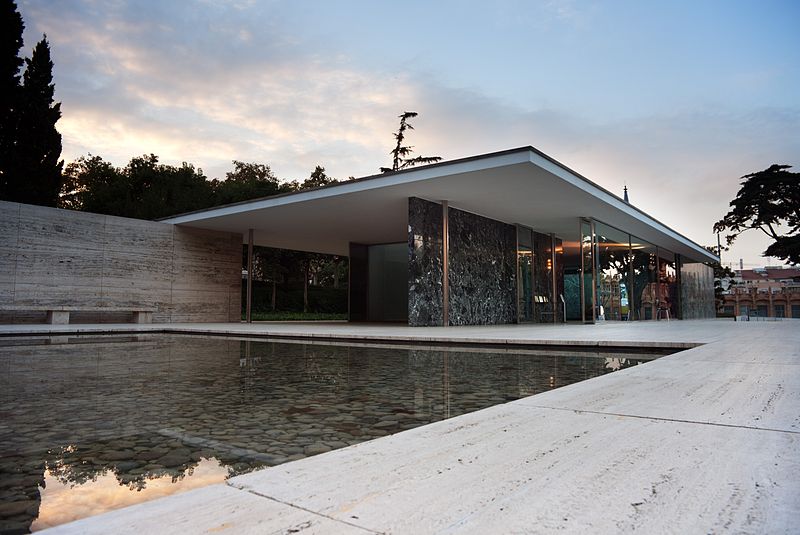<Back to Index>
- Physicist Douglas Rayner Hartree, 1897
- Architect Ludwig Mies van der Rohe, 1886
- Leader of the Soviet Communist Party Sergei Mironovich Kirov (Kostrikov), 1886
PAGE SPONSOR
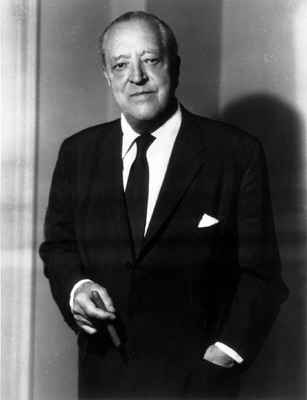
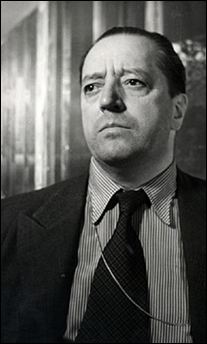
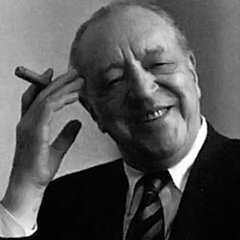
Ludwig Mies van der Rohe (March 27, 1886 – August 17, 1969) was a German architect. He was commonly referred to and addressed by his surname, Mies, by his colleagues, students, writers, and others.
Ludwig Mies van der Rohe, along with Walter Gropius and Le Corbusier, is widely regarded as one of the pioneering masters of Modern architecture. Mies, like many of his post World War I contemporaries, sought to establish a new architectural style that could represent modern times just as Classical and Gothic did for their own eras. He created an influential 20th century architectural style, stated with extreme clarity and simplicity. His mature buildings made use of modern materials such as industrial steel and plate glass to define interior spaces. He strived towards an architecture with a minimal framework of structural order balanced against the implied freedom of free flowing open space. He called his buildings "skin and bones" architecture. He sought a rational approach that would guide the creative process of architectural design. He is often associated with the aphorisms "less is more" and "God is in the details".
Mies worked in his father's stone carving shop and at several local design
firms before he moved to Berlin joining the office of interior designer Bruno Paul. He began his architectural career as an apprentice at the studio of Peter Behrens from 1908 to 1912, where he was exposed to the current design theories and to progressive German culture, working alongside Walter Gropius and Le Corbusier. Mies served as construction manager of the Embassy of the German Empire in Saint Petersburg under Behrens. His
talent was quickly recognized and he soon began independent
commissions, despite his lack of a formal college level education. A
physically imposing, deliberative, and reticent man, Ludwig Mies
renamed himself as part of his rapid transformation from a tradesman's
son to an architect working with Berlin's cultural elite, adding "van
der" and his mother's surname "Rohe". He
began his independent professional career designing upper class homes,
joining the movement seeking a return to the purity of early Nineteenth
Century Germanic domestic styles. He admired the broad proportions,
regularity of rhythmic elements, attention to the relationship of the
manmade to nature, and compositions using simple cubic volumes of the
early 19th century Prussian Neo-Classical architect Karl Friedrich Schinkel.
He dismissed the eclectic and cluttered classical styles so common at
the turn of the century as irrelevant to the modern times. After World War I,
Mies began, while still designing traditional neoclassical homes, a
parallel experimental effort. He joined his avant - garde peers in the
long running search for a new style that would be suitable for the
modern industrial age. The weak points of traditional styles had been
under attack by progressive theorists since the mid nineteenth century,
primarily for the contradictions of hiding modern construction
technology with a facade of ornamented traditional styles. The
mounting criticism of the historical styles gained substantial cultural
credibility after World War I, a disaster widely seen as a failure of
the old world order of imperial leadership of Europe. The aristocratic
classical revival styles were particularly reviled by many as the
architectural symbol of a now discredited and outmoded social system.
Progressive thinkers called for a completely new architectural design
process guided by rational problem solving and an exterior expression
of modern materials and structure rather than the superficial
application of classical facades. While
continuing his traditional neoclassical design practice Mies began to
develop visionary projects that, though mostly unbuilt, rocketed him to
fame as an architect capable of giving form that was in harmony with
the spirit of the emerging modern society. Boldly abandoning ornament
altogether, Mies made a dramatic modernist debut with his stunning
competition proposal for the faceted all glass Friedrichstraße skyscraper in 1921, followed by a taller curved version in 1922 named the Glass Skyscraper. He continued with a series of pioneering projects, culminating in his two European masterworks: the temporary German Pavilion for
the Barcelona exposition (often called the Barcelona Pavilion) in 1929
(a 1986 reconstruction is now built on the original site) and the
elegant Villa Tugendhat in Brno, Czech Republic, completed in 1930. He joined the German avant - garde, working with the progressive design magazine G which started in July 1923. He developed prominence as architectural director of the Werkbund, organizing the influential Weissenhof Estate prototype modernist housing exhibition. He was also one of the founders of the architectural association Der Ring. He joined the avant - garde Bauhaus design
school as their director of architecture, adopting and developing their
functionalist application of simple geometric forms in the design of
useful objects. Like
many other avant - garde architects of the day, Mies based his own
architectural theories and principles on his own personal
re-combination of ideas developed by many other thinkers and designers
who had pondered the flaws of the traditional design styles. Mies'
modernist thinking was influenced by many of the design and art
movements of the day. He selectively adopted theoretical ideas such as
the aesthetic credos of Russian Constructivism with
their ideology of "efficient" sculptural constructions using modern
industrial materials. Mies found appeal in the use of simple
rectilinear and planar forms, clean lines, pure use of color, and the
extension of space around and beyond interior walls expounded by the Dutch De Stijl group.
In particular, the layering of functional sub-spaces within an overall
space and the distinct articulation of parts as expressed by Gerrit Rietveld appealed to Mies. The design theories of Adolf Loos found
resonance with Mies, particularly the ideas of eradication of the
superficial and unnecessary, substituting elaborate applied ornament
with the straightforward display of rich materials and forms. Loos had
famously declared, in the tongue - in - cheek humor of the day, that
"ornament is a crime". Mies also admired his ideas about the nobility
that could be found in the anonymity of modern life. The bold work of American architects was greatly admired by European architects. Like other architects who viewed the Wasmuth Portfolio
and
its associated exhibit, Mies was enthralled with the free flowing
spaces of inter connected rooms which encompass their outdoor
surroundings as demonstrated by the open floor plans of the American Prairie Style work of Frank Lloyd Wright. American engineering structures were also held up to be exemplary of the beauty possible in functional construction.
Mies
pursued an ambitious lifelong mission to create a new architectural
language that could be used to represent the new era of technology and
production. He saw a need for an architecture expressive of and in
harmony with his epoch, just as Gothic architecture was
for an era of spiritualism. He applied a disciplined design process
using rational thought to achieve his spiritual goals. He believed that
the configuration and arrangement of every architectural element must
contribute to a unified expression. The self educated Mies
painstakingly studied the great philosophers and thinkers, past and
present, to enhance his own understanding of the character and
essential qualities of the technological times he lived in. More than
perhaps any other practising pioneer of modernism, Mies mined the
writings of philosophers and thinkers for ideas that were relevant to
his architectural mission. Mies' architecture was created at a high
level of abstraction, and his own generalized descriptions of his
principles intentionally leave much room for interpretation. Yet his
buildings also seem very direct and simple when viewed in person. Every
aspect of his architecture, from overall concept to the smallest
detail, supports his effort to express the modern age. The depth of
meaning conveyed by his work, beyond its aesthetic qualities, has drawn
many contemporary philosophers and theoretical thinkers to continue to
further explore and speculate about his architecture.
Opportunities
for commissions dwindled with the worldwide depression after 1929. In
the early 1930s, Mies served briefly as the last Director of the
faltering Bauhaus, at the request of his colleague and competitor Walter Gropius.
After 1933, Nazi political pressure soon forced Mies to close the
government financed school. He built very little in these years (one
built commission was Philip Johnson's
New York apartment); his style was rejected by the Nazis as not
"German" in character. Frustrated and unhappy, he left his homeland
reluctantly in 1937 as he saw his opportunity for any future building
commissions vanish, accepting a residential commission in Wyoming and
then an offer to head the department of architecture of the newly
established Illinois Institute of Technology in Chicago. Here he introduced a new kind of education and attitude later known as Second School of Chicago, which became very influential in the following decades in North America and Europe. Mies
settled in Chicago, Illinois where he was appointed as head of the
architecture school at Chicago's Armour Institute of Technology (later renamed Illinois Institute of Technology -
IIT). One of the benefits of taking this position was that he would be
commissioned to design the new buildings and master plan for the
campus. All his buildings still stand there, including Alumni Hall, the
Chapel, and his masterpiece the S.R. Crown Hall,
built as the home of IIT's School of Architecture. Crown Hall is widely
regarded as Mies' finest work, the definition of Miesian architecture. In
1944, he became an American citizen, completing his severance from his
native Germany. His 30 years as an American architect reflect a more
structural, pure approach towards achieving his goal of a new
architecture for the 20th century. He focused his efforts on enclosing
open and adaptable "universal" spaces with clearly arranged structural
frameworks, featuring pre-manufactured steel shapes infilled with large
sheets of glass. His early projects at the IIT campus and for developer
Herb Greenwald opened the eyes of Americans to a style that seemed a
natural progression of the almost forgotten 19th century Chicago School style. His architecture, with origins in the German Bauhaus and western European International Style,
became an accepted mode of building for American cultural and
educational institutions, developers, public agencies, and large
corporations.
Mies
worked from his studio in downtown Chicago for his entire 31 year
period in America. His significant projects in the U.S. include in
Chicago and the area: the residential towers of 860 - 880 Lake Shore Dr, the Chicago Federal Center complex, the Farnsworth House, Crown Hall and other structures at IIT; and the Seagram Building in New York. These iconic works became the prototypes for his other projects. Between 1946 and 1951, Mies van der Rohe designed and built the Farnsworth House,
a weekend retreat outside Chicago for an independent professional
woman, Dr. Edith Farnsworth. Here, Mies explored the relationship
between people, shelter, and nature. This small masterpiece showed the
world that exposed industrial steel and glass were materials capable of
creating architecture of great emotional impact. The glass pavilion is
raised six feet above a floodplain next to the Fox River, surrounded by
forest and rural prairies. The highly crafted pristine white structural
frame and all glass walls define a simple rectilinear interior space,
letting nature and light envelop the interior space. A wood panelled
fireplace (also housing mechanical equipment, kitchen, and toilets) is
positioned within the open space to suggest living, dining and sleeping
spaces without using walls. No partitions touch the surrounding
all glass enclosure. Without solid exterior walls,
full height draperies on a perimeter track allow freedom to provide
full or partial privacy when and where desired. The house has been
described as sublime, a temple hovering between heaven and earth, a
poem, a work of art. The Farnsworth House and its 60-acre (240,000 m2) wooded site was purchased at auction for US$7.5 million by preservation groups in 2004 and is now operated by the Landmarks Preservation Council of Illinois as a public museum. The building influenced the creation of hundreds of modernist glass houses, most notably the Glass House by Philip Johnson, located near New York City and also now owned by the National Trust for Historic Preservation. The
iconic Farnsworth House is considered among Mies's greatest works. The
house is an embodiment of Mies' mature vision of modern architecture
for the new technological age: a single unencumbered space within a
minimal "skin and bones" framework, a clearly understandable
arrangement of architectural parts. His ideas are stated with clarity
and simplicity, using materials that are allowed to express their own
individual character. Mies designed a series of four middle income high rise apartment buildings for developer Herb Greenwald: the 860 - 880 (which
was built between 1949 and 1951) and 900 - 910 Lake Shore Drive towers on
Chicago's Lakefront. These towers, with façades of steel and
glass, were radical departures from the typical residential brick apartment
buildings of the time. Mies found their unit sizes too small for
himself, choosing instead to continue living in a spacious traditional
luxury apartment a
few blocks away. The towers were simple rectangular boxes with a
non-hierarchical wall enclosure, raised on stilts above a glass
enclosed lobby. The lobby is set back from the perimeter columns, which
were exposed around the perimeter of the building above, creating a
modern arcade not
unlike those of the Greek temples. This configuration created a feeling
of light, openness, and freedom of movement at the ground level that
became the prototype for countless new towers designed both by Mies's
office and his followers. Some historians argue that this new approach
is an expression of the American spirit and the boundless open space of
the frontier, which German culture so admired. Once
Mies had established his basic design concept for the general form and
details of his tower buildings, he applied those solutions (with
evolving refinements) to his later high rise building projects. The
architecture of his towers appears to be similar, but each project
represents new ideas about the formation of highly sophisticated urban
space at ground level. He delighted in the composition of multiple
towers arranged in a seemingly casual non-hierarchical relation to each
other. Just as with his interiors, he created free flowing spaces and
flat surfaces that represented the idea of an oasis of uncluttered
clarity and calm within the chaos of the city. He included nature by
leaving openings in the pavement, through which plants seem to grow
unfettered by urbanization, just as in the pre-settlement environment. In 1958, Mies van der Rohe designed what is often regarded as the pinnacle of the modernist high rise architecture, the Seagram Building in New York City. Mies was chosen by the daughter of the client, Phyllis Bronfman Lambert,
who has become a noted architectural figure and patron in her own
right. The Seagram Building has become an icon of the growing power of
the corporation, that defining institution of the 20th century. In a
bold and innovative move, the architect chose to set the tower back
from the property line to create a forecourt plaza and fountain on Park Avenue.
Although now acclaimed and widely influential as an urban design
feature, Mies had to convince Bronfman's bankers that a taller tower
with significant "unused" open space at ground level would enhance the
presence and prestige of the building. Mies' design included a bronze
curtain wall with external H-shaped mullions that
were exaggerated in depth beyond what was structurally necessary.
Detractors criticized it as having committed Adolf Loos's "crime of ornamentation". Philip Johnson had a role in interior materials selections, and he designed the sumptuous Four Seasons Restaurant,
which has endured un-remodeled to today. The Seagram Building is said
to be an early example of the innovative "fast - track" construction
process, where design documentation and construction are done
concurrently. Using the Seagram as a prototype, Mies' office designed a number of modern high rise office towers, notably the Chicago Federal Center, which includes the Dirksen and Kluczynski Federal Buildings and Post Office (1959) and the IBM Plaza in Chicago; the Westmount Square in Montreal, and the Toronto - Dominion Centre in
1967. Each project applies the prototype rectangular form on stilts and
ever more refined enclosure wall systems, but each creates a unique set
of exterior spaces that are an essential aspect of his creative efforts. During 1951 - 1952, Mies' designed the steel, glass and brick McCormick House, located in Elmhurst, Illinois (15
miles west of the Chicago Loop), for real estate developer Robert Hall
McCormick, Jr. A one story adaptation of the exterior curtain wall of
his famous 860 - 880 Lake Shore Drive towers, it served as a prototype
for an unbuilt series of speculative houses to be constructed in
Melrose Park, Illinois. The house has been moved and reconfigured as a
part of the public Elmhurst Art Museum.
Mies designed two buildings for the Museum of Fine Arts, Houston (MFAH)
as additions to the Caroline Weiss Law Building. In 1953, the MFAH
commissioned Mies van der Rohe to create a master plan for the
institution. He designed two additions to the building — Cullinan Hall,
completed in 1958, and the Brown Pavilion, completed in 1974. A
renowned example of the International Style, these portions of the
Caroline Wiess Law Building comprise one of only two Mies designed
museums in the world.
Mies's last work was the
Neue Nationalgalerie art
museum, the New National Gallery, in Berlin. Considered one of the most
perfect statements of his architectural approach, the upper pavilion is
a precise composition of monumental steel columns and a cantilevered
(overhanging) roof plane with a glass enclosure. The simple square
glass pavilion is a powerful expression of his ideas about flexible
interior space, defined by transparent walls and supported by an
external structural frame. The glass pavilion is a relatively small
portion of the overall building, serving as a symbolic architectural
entry point and monumental gallery for larger scale art. A large podium
building below the pavilion accommodates most of the buildings actual
built area in more functional spaces for galleries, support and
utilitarian rooms. Ben
Daniels considers this building to be egotistical mania in steel and
glass, a gallery that hides its art from the light of day. The campus of Whitney Young High School and the adjacent Chicago Police Academy are two examples of the influence van der Rohe had on Chicago architecture.
Mies designed modern furniture pieces using new industrial technologies that have become popular classics, such as the Barcelona chair and table, the Brno chair, and the Tugendhat chair. His furniture is known for fine craftsmanship, a mix of traditional luxurious fabrics like leather combined with modern chrome frames, and a distinct separation of the supporting structure and the supported surfaces, often employing cantilevers to enhance the feeling of lightness created by delicate structural frames. During this period, he collaborated closely with interior designer and companion Lilly Reich. Mies
played a significant role as an educator, believing his architectural
language could be learned, then applied to design any type of modern
building. He set up a new education at the Department of Architecture
of the Illinois Institute of Technology in Chicago replacing the old fashioned Ecole des Beaux - Art attitude
by a three step education beginning with crafts of building leading to
planning skills and finishing with theory of architecture (compare Vitruvius:
firmitas, utilitas, venustas). He worked personally and intensively on
prototype solutions, and then allowed his students, both in school and
his office, to develop derivative solutions for specific projects under
his guidance. Some of Mies' curriculum is still put in practice in the
first and second year programs at IIT, for example the excruciating
drafting of bricks in second year. But when none was able to match the
genius and poetic quality of his own work, he agonized about where his
educational method had gone wrong. Nevertheless his achievements for an
architecture created out of modern technology survived very
successfully until today by others and is known as High - tech architecture. Mies
placed great importance on education of architects who could carry on
his design principles. He devoted a great deal of time and effort
leading the architecture program at IIT. Mies served on the initial
Advisory Board of the Graham Foundation in
Chicago. His own practice was based on intensive personal involvement
in design efforts to create prototype solutions for building types (860
Lake Shore Dr, the Farnsworth, Seagram, S.R. Crown Hall, The New
National Gallery), then allowing his studio designers to develop
derivative buildings under his supervision. Mies's grandson Dirk Lohan and
two partners led the firm after he died in 1969. Lohan, who had
collaborated with Mies on the New National Gallery, continued with
existing projects but soon led the firm on his own independent path.
Other disciples continued his teachings for a few years, notably Gene
Summers, David Haid, Myron Goldsmith, Jacques Brownson, and other
architects at the firms of C.F. Murphy and Skidmore, Owings and Merrill. But
while Mies' work had enormous influence and critical recognition, his
approach failed to sustain a creative force as a style after his death and was eclipsed by the new wave of Post Modernism by
the 1980s. He had hoped his architecture would serve as a universal
model that could be easily imitated, but the aesthetic power of his
best buildings proved impossible to match, instead resulting mostly in
drab and uninspired structures. The failure of his followers to meet
his high standard may have contributed to demise of Modernism and the
rise of new competing design theories, notably Postmodernism.
Over
the last twenty years of his life, Mies developed and built his vision
of a monumental "skin and bones" architecture that reflected his goal
to provide the individual a place to fulfill himself in the modern era.
Mies sought to create free and open spaces, enclosed within a structural order with minimal presence. Mies van der Rohe died on
August 17, 1969. After cremation, his ashes were buried near Chicago's other famous architects in Chicago's Graceland Cemetery. His grave is marked by a simple black slab of granite and a large Honey locust tree.
The Ludwig Mies van der Rohe Archive, an administratively independent section of the
Museum of Modern Art's
Department of Architecture and Design, was established in 1968 by the
Museum's trustees. It was founded in response to the architect's desire
to bequeath his entire work to the Museum. The Archive consists of
about nineteen thousand drawings and prints, one thousand of which are by the designer and architect Lilly Reich (1885 – 1947),
Mies van der Rohe's close collaborator from 1927 to 1937; of written
documents (primarily, the business correspondence) covering nearly the
entire career of the architect; of photographs of buildings, models, and furniture; and of audiotapes, books, and periodicals. Archival materials are also held by the Ryerson & Burnham Libraries at the Art Institute of Chicago.
The Ludwig Mies van der Rohe Collection, 1929 - 1969 (bulk 1948 - 1960)
includes correspondence, articles, and materials related to his
association with the Illinois Institute of Technology. The Ludwig Mies
van der Rohe / Metropolitan Structures Collection, 1961 – 1969, includes
scrapbooks and photographs documenting Chicago projects. Other
archives are held at the University of Illinois at Chicago (personal
book collection), the Canadian Center for Architecture (drawings and
photos) in Montreal, the Newberry Library in Chicago (personal
correspondence), the Library of Congress in Washington D.C.
